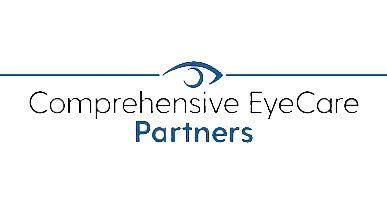Do you reach for your reading glasses to read a menu, see your alarm clock, or use your phone? Do you wish you could stop depending on them for these tasks?
Refractive lens exchange (RLE) can give you the freedom you’ve always desired from reading glasses. Keep reading to learn more about moving on from your reading glasses after refractive lens exchange and how it can help you see more clearly daily.
What is Refractive Lens Exchange?

Also known as lens replacement surgery or clear lens exchange (CLE), refractive lens exchange is an effective and safe procedure to eliminate the need for reading glasses. If you’re 50 or older and want to reduce your dependence on reading glasses but aren’t a good candidate for refractive procedures like LASIK, refractive lens exchange can be a good option.
Refractive lens exchange replaces your natural lens with an artificial lens called an intraocular lens (IOL) to correct your refractive error. The IOL takes the place of your natural lens to help you see clearly.
It refracts light entering your eye, helping it focus appropriately on the retina so you can see clearly without reading glasses. Before undergoing refractive lens exchange at Evergreen Eye Center, your surgeon will help you choose the best IOL, depending on your vision needs, lifestyle, and post-procedure goals.
Refractive lens exchange is similar to cataract surgery, except your natural lens will be replaced with an IOL before cataracts can form.
What Happens During Refractive Lens Exchange?
Your surgeon will start by applying numbing eye drops so you won’t feel any pain. You may also be given a sedative to help you feel more comfortable.
Your eye will be kept open to prevent blinking. You’ll be awake during the entire procedure but will not see what your surgeon is doing.
You’ll only see general movements and light. Next, your surgeon will create a tiny incision at the side of your cornea.
They will then soften and break your natural lens into tiny pieces. Once dissolved, your surgeon will gently suction small fragments of your natural lens with a vacuum system.
After removing any pieces of your natural lens, your surgeon will implant the new IOL in the capsular bag that once held it. The incision is so tiny that it won’t need stitches.
Your eye will be left to heal on its own before your surgeon puts a shield over it to protect it as it heals. Refractive lens exchange is performed one eye at a time, with about two weeks between procedures.
The procedure takes 15 to 30 minutes to complete. After the procedure ends, you’ll be monitored for about an hour before going home.
What to Expect After Refractive Lens Exchange
You won’t be able to drive yourself home. Arrange a ride to and from Evergreen Eye Center after your procedure. You’ll return the next day for your first follow-up appointment.
Your vision may be blurry right after having refractive lens exchange. However, it’ll clear up after a few days. You may also experience the following temporary side effects:
- Redness
- Gritty feeling
- Watery eyes
- Double vision
- Light sensitivity
These side effects can last for several days to a week. Recovery is usually fast, with patients typically experiencing better vision the same day and significant improvement within a week.
You’ll need to use eye drops to prevent inflammation and infection for a month following your procedure. Most patients can resume their normal routine within a week of having refractive lens exchange.
Benefits of Refractive Lens Exchange
Having an IOL implanted during refractive lens exchange means you’ll never develop cataracts. Other reasons to choose refractive lens exchange include:
No More Reading Glasses

The most significant benefit of refractive lens exchange is improved vision. You can say goodbye to forgotten, broken, or lost reading glasses.
After refractive lens exchange, you’ll no longer need to avoid certain activities for fear of glasses getting in the way. Whether you enjoy keeping fit at the gym, tennis, golf, or swimming, there are better options than glasses for these and other activities.
When you no longer have to rely on your glasses to see, you’ll have greater freedom to do everything you love. More importantly, refractive lens exchange is a permanent procedure with long-lasting results.
By investing in your vision with refractive lens exchange, you could enjoy crystal clear vision for a lifetime.
Corrects Refractive Errors
Refractive lens exchange offers an excellent option compared to a lifetime of reading glasses. It can address a range of refractive errors, including:
Nearsightedness
Also called myopia, nearsightedness means that nearby objects are clear while distant objects are blurry.
Farsightedness
Farsightedness or hyperopia is a common refractive error in which you can clearly see things at a distance, but things up close appear blurry.
Astigmatism
Typically, the cornea is round like a tennis ball, enabling it to focus light correctly on the retina. However, with astigmatism, your cornea is shaped like a football, which stops it from focusing light correctly on your retina.
The result is blurred and distorted vision at all distances.
Corrects Presbyopia
Do you hold your smartphone, book, newspaper, or magazine at arm’s length to see clearly? If you’re in your 40s and have noticed that you struggle to read and see things right in front of you, you may have presbyopia.
Presbyopia is an age-related eye condition that occurs when your once flexible lens becomes rigid. As you grow older, your lens gradually loses its elasticity and hardens.
This makes it difficult for your lens to change shape and focus on up-close images. Consequently, these images appear out of focus.
Selecting a premium IOL during refractive lens exchange can correct presbyopia and eliminate the need for reading glasses.
An Excellent Alternative to Laser Vision Correction Procedures
Not everyone can undergo procedures like LASIK due to factors like having corneas that are too thin. You may also not be a good candidate for procedures like PRK and SMILE if you have certain eye conditions.
Refractive lens exchange offers a fantastic alternative if you want to see without glasses but are not eligible for laser eye procedures. Your ophthalmologist may recommend refractive lens exchange if you have thin corneas, severe dry eyes, or a stronger prescription.
Treats High Prescriptions
The higher your prescription is, the more corneal tissue your surgeon will need to remove. Removing too much corneal tissue during laser vision correction can weaken the structure of your cornea and increase the risk of complications like corneal ectasia post-surgery.
Because of this, you may not have laser vision correction if your prescription falls beyond the treatable range of LASIK or PRK. Fortunately, refractive lens exchange can effectively and safely treat extremely high prescriptions. The visual results are impressive, particularly considering the high prescriptions, which allow you to see clearly without reading glasses.

Achieve the Best Vision of Your Life with Refractive Lens Exchange
Refractive lens exchange at Evergreen Eye Center is incredibly effective. You can finally say goodbye to your reading glasses and hello to clearer, vibrant vision.
Are you interested in refractive lens exchange? Schedule your appointment at Evergreen Eye Center to find out if it’s right for you!

